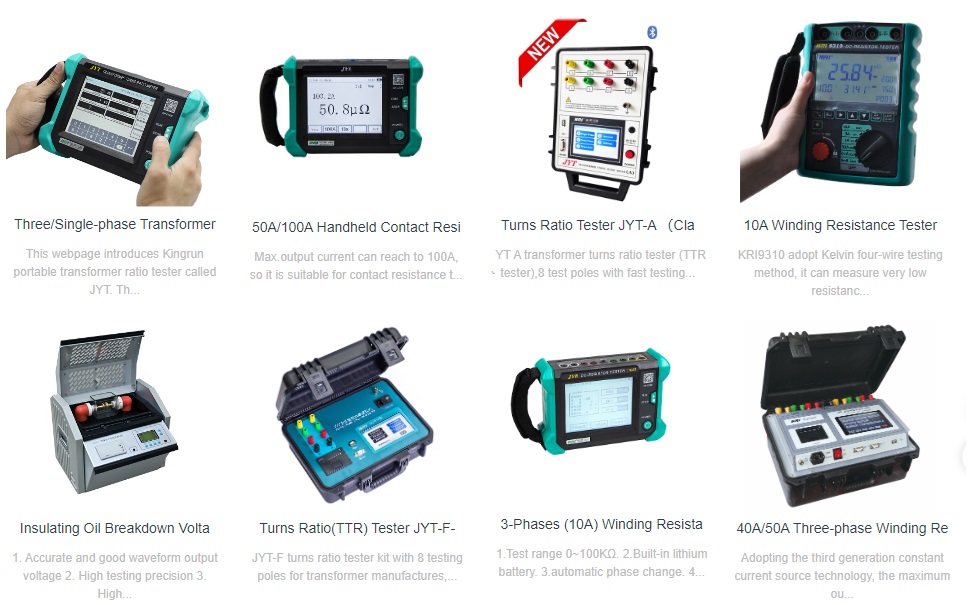The insulation resistance test of cables is mainly used to check whether the cable insulation is affected by moisture, dirt, and local defects, and it can also determine the nature of defects detected in the withstand voltage test, ensuring the safe and stable operation of the power system.
1.Detect insulation defects: This test is highly sensitive in detecting moisture ingress, dirt, and local defects in cable insulation. During the production, transportation, laying, and operation of cables, the insulation layer may be affected by various factors, such as water intrusion, dust contamination, and mechanical damage. Through insulation resistance testing, these potential problems can be detected in a timely manner, avoiding failures such as short - circuits and leakage caused by a decrease in insulation performance. -
2.Determine the nature of defects: It can check the nature of the defects detected by the withstand voltage test. When abnormalities are found in the cable during the withstand voltage test, the insulation resistance test can further analyze the specific situation of the defects, helping maintenance personnel accurately determine the cause of the failure and providing a basis for subsequent repairs and replacements.
3.Ensure system safety: Power cables are key equipment for power transmission, and their insulation performance is directly related to the safe and stable operation of the power system. Regular insulation resistance testing can help keep track of the insulation status of cables in a timely manner, preventing power outages caused by damaged cable insulation and ensuring the reliability of power supply.
(1) During measurement, for cables with a rated voltage of 1 kV and above, a 2500 V megohmmeter should be used; for cables with a rated voltage below 1 kV, a 1000 V megohmmeter should be used. Cables in operation should be fully discharged, all external connections should be removed, and the cable terminals should be wiped clean with a clean and dry cloth. Then, the cable cores of the non - tested phases and the lead sheath should be grounded together, and measurements should be taken phase by phase. During the test, the reading at 1 minute should be recorded. To ensure accurate measurement, a shielding ring should be installed on the insulation at the end of the cable core or the end of the bushing and connected to the shielding terminal of the megohmmeter.
(2) Due to the large capacitance of the cable, the shaking speed of the megohmmeter should be uniform during operation. After the measurement is completed, the live wire should be disconnected first, and then the shaking should be stopped to prevent the megohmmeter from being reverse - charged by the capacitive current and damaged. After each measurement, the cable should be fully discharged, and insulated tools should be used for all operations to prevent electric shock.
(3) The insulation resistance value of a power cable is related to the cable length and the temperature during measurement. For easy comparison, temperature and length conversions are required. The formula for converting to 20°C is as follows:
Where:
is the insulation resistance value at a temperature of 20°C, in MΩ; is the measured insulation resistance value at a temperature of t°C, in MΩ; is the temperature conversion coefficient of the cable insulation resistance. The temperature conversion coefficients are shown in Table 1 - 1.
Table 1 - 1 Temperature Conversion Coefficients of Cable Insulation
|
Temp. (°C) |
0 |
5 |
10 |
15 |
20 |
25 |
30 |
35 |
40 |
|
|
0.48 |
0.57 |
0.07 |
0.85 |
1.00 |
1.13 |
1.41 |
1.66 |
1.92 |
There is no clearly specified standard value for the insulation resistance of power cables. Generally, it should not be less than the values shown in Table 1 - 2.
Rated Voltage (kV)
1 and below
3
6 - 10
20 - 35
Insulation Resistance (MΩ)
10
200
400
600
Table 1 - 2 Reference Values of Insulation Resistance for a 250 - m - long Cable at 20°C
Note: When the cable length is greater than 250 m, the reference value is allowed to decrease appropriately.
After measuring the insulation resistance of multi - core cables, the insulation condition can also be analyzed and judged using the unbalance factor. The unbalance factor is equal to the ratio of the maximum value to the minimum value of the insulation resistance values of each core wire in the same cable. For cables with good insulation, the unbalance factor is generally not greater than 2.5.
JYM insulation resistance tester
Kingrun Transformer Instrument Co.,Ltd.


More Transformer Testers from Kingrun
